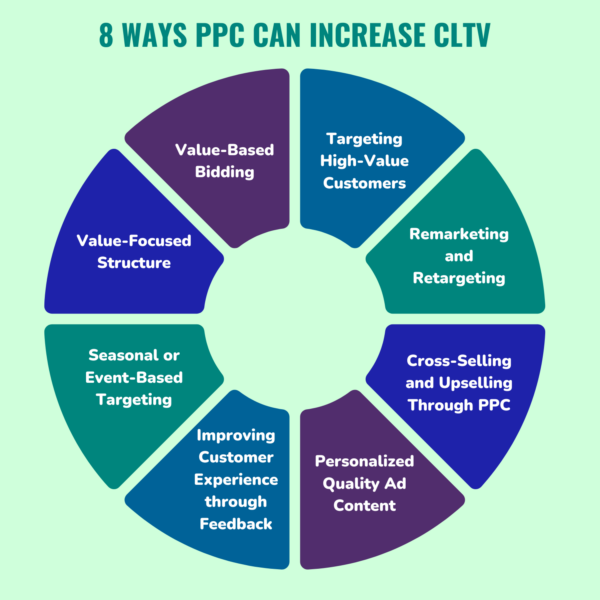In our last article we covered customer life-time value where we discussed how digital marketers can build a strategy not just to measure CLTV, but also to impact it in a myriad of ways. This time we want to dive deeper into how marketers can use PPC to impact CLTV.
Pay-Per-Click (PPC) advertising has revolutionized the way businesses interact with their audiences, but businesses must understand that PPC is not just a tool for driving traffic; it’s a powerful medium for engaging customers and building lasting relationships. In fact, the Interactive Advertising Bureau (IAB) reports that businesses leveraging data from PPC campaigns see a 33% increase in customer engagement.
We’ve compiled 8 ways in which PPC can engage with customers and increase CLTV:


- Value-Focused Structure
- Value-Based Bidding
- Targeting High-Value Customers
- Remarketing and Retargeting
- Cross-Selling and Upselling Through PPC
- Personalized Quality Ad Content
- Improving Customer Experience Through Feedback
- Seasonal or Event-Based Targeting

